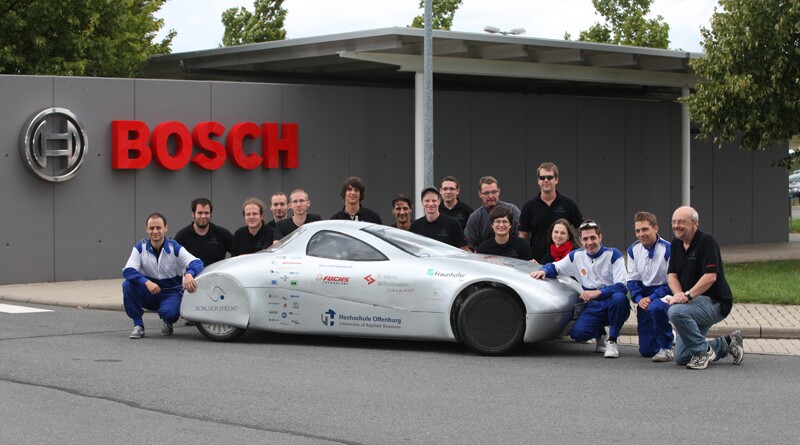The "Schluckspecht E" electric vehicle built by a team at the University of Applied Sciences in Offenberg, Germany has broken the world record for the longest distance traveled on a single charge. The world record attempt was made at the Bosch test track in Boxberg with the vehicle traveling a total distance of 1631.5 km (1,013.76 miles), breaking the previous record of 1,003 km (623 miles) set by the Japan Electric Vehicle Club last year.
While the Schluckspecht E beat the previous record by more than 600 km (373 miles), what's even more impressive is that the feat was accomplished using existing rechargeable battery technology. The impressive range of the vehicle is due to the fact that it was designed from the ground up using lightweight materials in an aerodynamic shape. The 320 kg (705 lb) single-seat vehicle is driven by two wheel hub motors integrated into the wheels that are powered by 14 lithium-ion battery packs.
The aerodynamic and weight efficiencies of the vehicle are highlighted by the fact that the battery capacity of the Schluckspecht E was just 23 kWh, compared to the previous record holder's 50 kWh. Additionally, the Schluckspecht E achieved an average speed of 45 km/h (28 mph), while the Japan Electric Vehicle Club's Mira EV averaged 40 km/h (25 mph).

The total time of the record breaking journey was 36 hours and 12 minutes, with the vehicle's drivers having to contend with sometimes-rainy conditions. This latest achievement builds on the Schluckspecht team's previous success in completing the South African Solar Challenge 2010, when the vehicle traveled 626.6 km (389 miles) on a single charge.
We're not sure if the use of the name Schluckspecht, which is apparently colloquial German for "heavy drinker," refers to a characteristic of the team members or to the original Schluckspecht I, which the team introduced in 1998 and ran on a gasoline engine. Either way, the Schluckspecht team has no doubt been toasting their success in claiming their world record.







